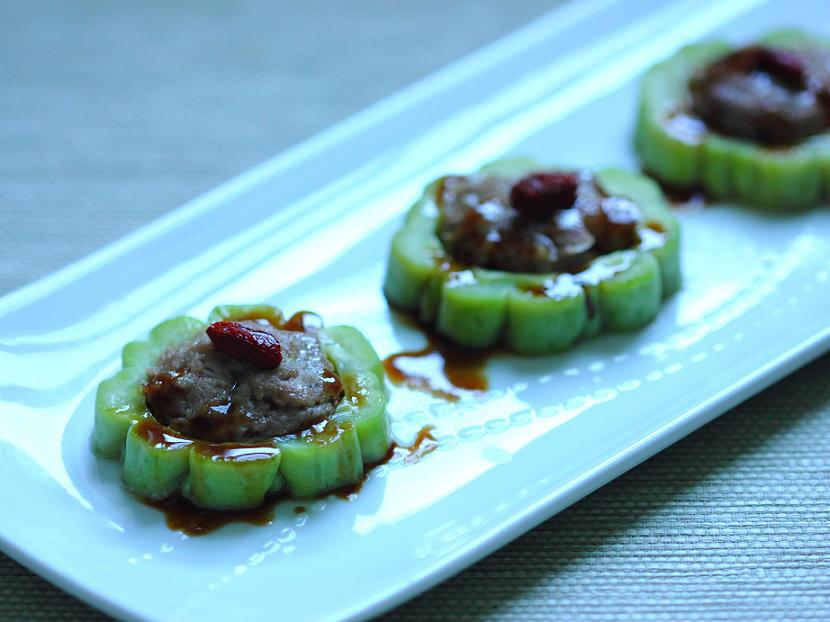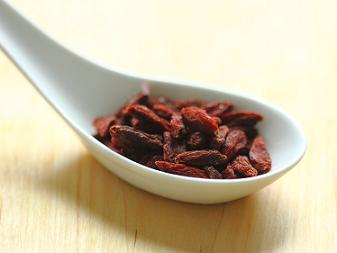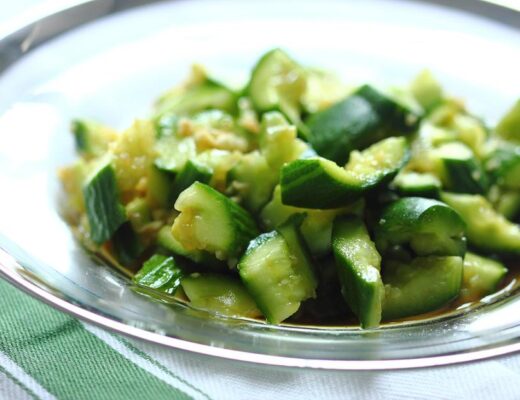Last Updated on September 20, 2020 by Simon Fan
Among the five primary tastes, bitterness is rather an acquired taste for most people. But once you know how to appreciate it, you’re on your way to experiencing new taste sensations.
It seems that bitter taste has become increasingly popular, judging from the growing number of people that enjoy drinking coffee or tea without sugar, prefer dark chocolate to milk chocolate, or love bitter vegetables such as arugula, Brussels sprouts, and mustard greens.
If you’re part of this crowd, bitter melon (ku gua 苦瓜) might just be the next thrill you are looking for. Although it has not become a mainstream vegetable in the US (yet), it’s used in many cuisines around the world.

Bitter melon provides a rewarding challenge for cooks who love to experiment with the interactions of tastes. What’s the best way to tame the bitterness in food? Adding sugar might be the first thing that comes to most people’s minds. But salt, surprisingly, works most effectively to reduce the perception of bitterness on our taste buds. Vinegar also works well, to a lesser degree.
Once you know how to balance the tastes when cooking with bitter melon, you’ll find that it can be very refreshing as a palate cleanser or stimulant. Eating bitter melon in the summer also gives you the benefit of its cooling effect on your body.
In Chinese cuisine, bitter melon is often stir-fried with meat (beef or pork) or added to soups. Stuffing it with meat or seafood is also a classic preparation, as in my recipe below.
While most recipes use ground pork stuffing, I opt for a meatloaf mix, which is a mixture of ground pork, beef, and veal. I love the rich and unique flavors created by bringing the three types of meat together. Feel free to substitute any meat of your choice.
Once stuffed, the bitter melon is steamed together with goji berries and served with a sauce flavored with Zhenjiang vinegar and hoisin sauce.
Given salt is your secret weapon to tame the bitterness, you want to season the meat and sauce generously with that magical ingredient.
Stuffed bitter melon with ground pork, beef, and veal
Serves 2
Ingredients
Stuffing
11 oz (310 g) meatloaf mix (ground beef, pork, and veal) or any meat of your choice
2 teaspoons soy sauce
2 teaspoons potato starch or cornstarch
1 teaspoon Shaoxing wine
2 teaspoons water
½ teaspoon salt
1 large bitter melon, about 14 oz (400 g)
Salt
Goji berries (see Note below)
Sauce
1 teaspoon Zhenjiang (aka Chinkiang) vinegar
2 teaspoons hoisin sauce
1 teaspoon sesame oil
Salt and freshly ground white pepper
Directions
- Mix well all the ingredients for the stuffing. Let marinate for 15 minutes.
- Cut the bitter melon crosswise into ½-inch-thick (1.3 cm) rounds. Use a paring knife to remove the seeds and pith. To reduce their bitterness, place them in a colander and mix in a generous amount of salt. Let stand for 10 minutes, then rinse under water, drain well, and pat dry.
- Stuff each round with a portion of meat. Press the meat firmly to ensure it stays in place, then put a goji berry on top.
- Place the stuffed rounds on a heatproof plate that can fit into a steamer (or two plates if using a two-tier steamer). Steam over high heat until the meat is cooked through and the bitter melon is tender but not mushy, about 10 minutes.
- To make the sauce, strain the cooking liquid gathered on the plate(s) into a small saucepan. Mix in the vinegar, hoisin sauce, and sesame oil. Whisk and cook over medium-low heat until the sauce has nicely reduced. Season to taste with salt and pepper.
- Arrange the bitter melon rounds attractively on a serving plate. Drizzle with the sauce on top and serve.
Note: Goji berry (枸杞) or wolfberry is used frequently in Chinese cuisine. Typically available in dried form, these berries are added to braises, stews, and soups for their unique flavor, beautiful color, as well as nutritional value. Young leaves of goji berry are consumed as a vegetable as well.




